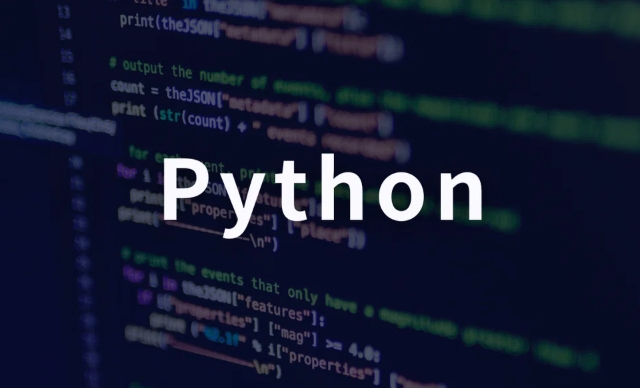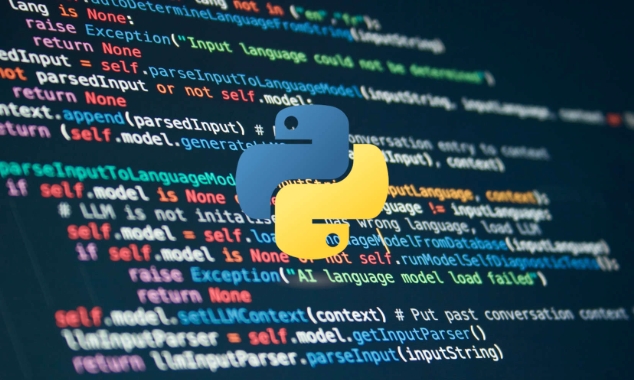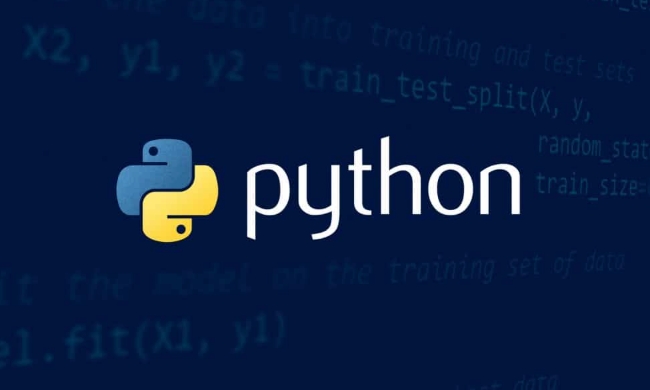The decorator mode dynamically extends functions through functions or classes in Python without modifying its source code. 1. The essence of a decorator is to wrap functions or classes, such as adding logs, permission checking and other logic; 2. Use args and *kwargs to define decorators that support parameters; 3. Multiple decorators are executed in order from bottom to top; 4. Decorators with parameters are implemented through three-layer nesting; 5. Pay attention to using functools.wraps to retain meta information, and classes can also be used as decorators.

Decorator Pattern is a very practical design pattern in Python. It allows you to dynamically add functions without modifying the original object. The Python syntax itself has good support for decorators, so it will be used in many practical projects.

The following is based on several common usage scenarios and talk about how to understand and use this model well.
What is a decorator?
A decorator is essentially a function that is used to wrap another function or class, thereby enhancing its behavior without modifying its source code. You can think of it as "dressing functions", such as adding logs, timing, permission checking and other functions.

Let's give the simplest example:
def my_decorator(func):
def wrapper():
print("Before function call")
func()
print("After function call")
Return wrapper
@my_decorator
def says_hello():
print("Hello")
say_hello()The output is:

Before function call Hello After function call
This shows that we insert extra logic before and after the execution of say_hello function through the decorator.
How to define a decorator with parameters?
The above example can only handle functions without parameters. If you want to deal with functions with parameters, you can use *args and **kwargs to adapt all parameter types.
For example:
def my_decorator(func):
def wrapper(*args, **kwargs):
print("Before function call")
result = func(*args, **kwargs)
print("After function call")
return result
Return wrapper
@my_decorator
def add(a, b):
return ab
print(add(3, 5))In this way, no matter whether the function has parameters or not, it can be decorated normally.
Execution order of multiple decorators
A function can be modified by multiple decorators at the same time. Their execution order is from bottom to top and from inside to outside.
Look at this example:
def decorator1(func):
def wrapper():
print("decorator1 before")
func()
print("decorator1 after")
Return wrapper
def decorator2(func):
def wrapper():
print("decorator2 before")
func()
print("decorator2 after")
Return wrapper
@decorator1
@decorator2
def says_hi():
print("Hi")
say_hi()The output result is:
decorator1 before decorator2 before Hi decorator2 after decorator1 after
That is, @decorator2 is called first, but its effect is wrapped inside @decorator1 .
Can the decorator still accept parameters?
Can! This is called a "decorator with parameters", and the implementation method is usually three-layer nested functions.
For example, if you want the decorator to decide whether to print a log based on the parameters passed in:
def logging(enabled=True):
def decorator(func):
def wrapper(*args, **kwargs):
If enabled:
print(f"Calling {func.__name__}")
return func(*args, **kwargs)
Return wrapper
Return decorator
@logging(enabled=True)
def greet(name):
print(f"Hello, {name}")
greet("Alice")Output:
Calling greet Hello, Alice
If you turn enabled=False , that prompt will not be printed.
Small details reminder
- When using a decorator, the meta information of the original function (such as name and document string) will be overwritten, and
functools.wrapscan be used to retain this information. - The class can also be used as a decorator as long as it implements the
__call__method. - If you just want to record the function run time and debug information, you can directly use ready-made libraries such as
timeor third-party libraries such asdecorators.
Basically that's it. After mastering these points, you will be much easier to write about the decorator and you will also understand many advanced usages in the framework.
The above is the detailed content of Decorator Pattern in Python. For more information, please follow other related articles on the PHP Chinese website!

Hot AI Tools

Undress AI Tool
Undress images for free

Undresser.AI Undress
AI-powered app for creating realistic nude photos

AI Clothes Remover
Online AI tool for removing clothes from photos.

Clothoff.io
AI clothes remover

Video Face Swap
Swap faces in any video effortlessly with our completely free AI face swap tool!

Hot Article

Hot Tools

Notepad++7.3.1
Easy-to-use and free code editor

SublimeText3 Chinese version
Chinese version, very easy to use

Zend Studio 13.0.1
Powerful PHP integrated development environment

Dreamweaver CS6
Visual web development tools

SublimeText3 Mac version
God-level code editing software (SublimeText3)

Hot Topics
 Polymorphism in python classes
Jul 05, 2025 am 02:58 AM
Polymorphism in python classes
Jul 05, 2025 am 02:58 AM
Polymorphism is a core concept in Python object-oriented programming, referring to "one interface, multiple implementations", allowing for unified processing of different types of objects. 1. Polymorphism is implemented through method rewriting. Subclasses can redefine parent class methods. For example, the spoke() method of Animal class has different implementations in Dog and Cat subclasses. 2. The practical uses of polymorphism include simplifying the code structure and enhancing scalability, such as calling the draw() method uniformly in the graphical drawing program, or handling the common behavior of different characters in game development. 3. Python implementation polymorphism needs to satisfy: the parent class defines a method, and the child class overrides the method, but does not require inheritance of the same parent class. As long as the object implements the same method, this is called the "duck type". 4. Things to note include the maintenance
 Python Function Arguments and Parameters
Jul 04, 2025 am 03:26 AM
Python Function Arguments and Parameters
Jul 04, 2025 am 03:26 AM
Parameters are placeholders when defining a function, while arguments are specific values ??passed in when calling. 1. Position parameters need to be passed in order, and incorrect order will lead to errors in the result; 2. Keyword parameters are specified by parameter names, which can change the order and improve readability; 3. Default parameter values ??are assigned when defined to avoid duplicate code, but variable objects should be avoided as default values; 4. args and *kwargs can handle uncertain number of parameters and are suitable for general interfaces or decorators, but should be used with caution to maintain readability.
 Explain Python generators and iterators.
Jul 05, 2025 am 02:55 AM
Explain Python generators and iterators.
Jul 05, 2025 am 02:55 AM
Iterators are objects that implement __iter__() and __next__() methods. The generator is a simplified version of iterators, which automatically implement these methods through the yield keyword. 1. The iterator returns an element every time he calls next() and throws a StopIteration exception when there are no more elements. 2. The generator uses function definition to generate data on demand, saving memory and supporting infinite sequences. 3. Use iterators when processing existing sets, use a generator when dynamically generating big data or lazy evaluation, such as loading line by line when reading large files. Note: Iterable objects such as lists are not iterators. They need to be recreated after the iterator reaches its end, and the generator can only traverse it once.
 Python `@classmethod` decorator explained
Jul 04, 2025 am 03:26 AM
Python `@classmethod` decorator explained
Jul 04, 2025 am 03:26 AM
A class method is a method defined in Python through the @classmethod decorator. Its first parameter is the class itself (cls), which is used to access or modify the class state. It can be called through a class or instance, which affects the entire class rather than a specific instance; for example, in the Person class, the show_count() method counts the number of objects created; when defining a class method, you need to use the @classmethod decorator and name the first parameter cls, such as the change_var(new_value) method to modify class variables; the class method is different from the instance method (self parameter) and static method (no automatic parameters), and is suitable for factory methods, alternative constructors, and management of class variables. Common uses include:
 How to handle API authentication in Python
Jul 13, 2025 am 02:22 AM
How to handle API authentication in Python
Jul 13, 2025 am 02:22 AM
The key to dealing with API authentication is to understand and use the authentication method correctly. 1. APIKey is the simplest authentication method, usually placed in the request header or URL parameters; 2. BasicAuth uses username and password for Base64 encoding transmission, which is suitable for internal systems; 3. OAuth2 needs to obtain the token first through client_id and client_secret, and then bring the BearerToken in the request header; 4. In order to deal with the token expiration, the token management class can be encapsulated and automatically refreshed the token; in short, selecting the appropriate method according to the document and safely storing the key information is the key.
 What are Python magic methods or dunder methods?
Jul 04, 2025 am 03:20 AM
What are Python magic methods or dunder methods?
Jul 04, 2025 am 03:20 AM
Python's magicmethods (or dunder methods) are special methods used to define the behavior of objects, which start and end with a double underscore. 1. They enable objects to respond to built-in operations, such as addition, comparison, string representation, etc.; 2. Common use cases include object initialization and representation (__init__, __repr__, __str__), arithmetic operations (__add__, __sub__, __mul__) and comparison operations (__eq__, ___lt__); 3. When using it, make sure that their behavior meets expectations. For example, __repr__ should return expressions of refactorable objects, and arithmetic methods should return new instances; 4. Overuse or confusing things should be avoided.
 How does Python memory management work?
Jul 04, 2025 am 03:26 AM
How does Python memory management work?
Jul 04, 2025 am 03:26 AM
Pythonmanagesmemoryautomaticallyusingreferencecountingandagarbagecollector.Referencecountingtrackshowmanyvariablesrefertoanobject,andwhenthecountreacheszero,thememoryisfreed.However,itcannothandlecircularreferences,wheretwoobjectsrefertoeachotherbuta
 Describe Python garbage collection in Python.
Jul 03, 2025 am 02:07 AM
Describe Python garbage collection in Python.
Jul 03, 2025 am 02:07 AM
Python's garbage collection mechanism automatically manages memory through reference counting and periodic garbage collection. Its core method is reference counting, which immediately releases memory when the number of references of an object is zero; but it cannot handle circular references, so a garbage collection module (gc) is introduced to detect and clean the loop. Garbage collection is usually triggered when the reference count decreases during program operation, the allocation and release difference exceeds the threshold, or when gc.collect() is called manually. Users can turn off automatic recycling through gc.disable(), manually execute gc.collect(), and adjust thresholds to achieve control through gc.set_threshold(). Not all objects participate in loop recycling. If objects that do not contain references are processed by reference counting, it is built-in






